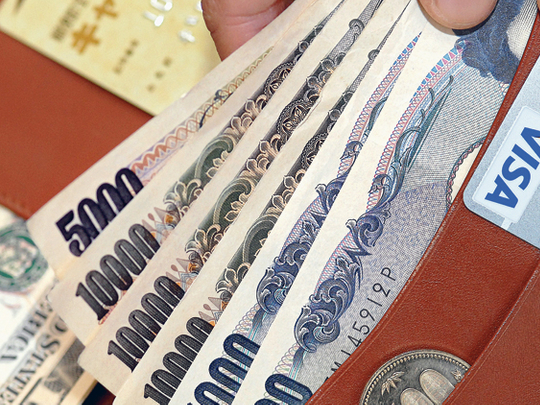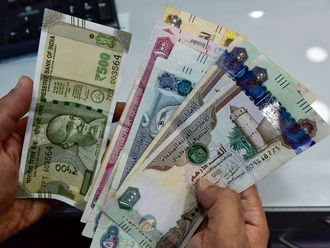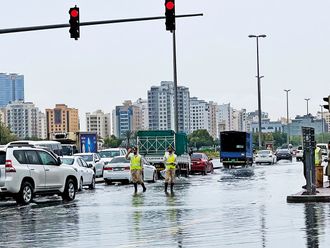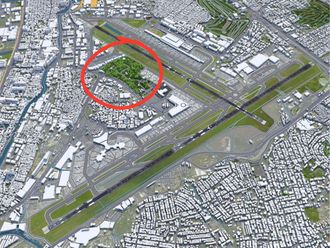
Abu Dhabi: From sky-rocketing non-performing loans (NPL) to the drying up of liquidity, UAE banks probably faced their toughest year ever in 2009.
But at least it was expected.
Although analysts point to the noticeable improvement in capital adequacy, provisioning and compliance with stricter regulations by the Central Bank, uncertainty continues to overshadow any talk of recovery this year.
Provisioning is an expense, according to Investopedia set aside as an allowance for bad loans.
"The entire scene now depends on the outcome of the restructuring negotiations between Dubai World and the banks," said Dheeraj Lakhwani, banking analyst at Prime Emirates. "Only then will confidence return and banks can decide how to pursue their lending strategy in UAE."
Moody's estimated Dubai World owes UAE banks $15 billion (Dh55 billion) based on its receipt of "sufficient information from most rated banks." Provisions will also have to be made for heavy losses likely to be taken against exposure to the troubled Saudi groups Saad and Algosaibi.
And yet another big question mark remains over the recovery, or possible continued slide of the real estate sector in Dubai, to which local banks are heavily exposed. Emirates NBD, the Gulf's largest lender by assets, said earlier this month its real estate exposure accounted for 27 per cent of its loan book.
Soft growth
It all adds up to another year of soft loan growth, said Janany Vamadeva banking analyst at HC Sec-urities in Dubai, which ultimately means low econ-omic growth.
"It's a cycle," Vamadeva said. "Without one you cannot have the other."
The slow economy and tightening of Central Bank provisioning rules have forced banks to increase their provisions by more than 73 per cent last year to Dh45.8 billion. NPLs now represent 4.4 per cent of total loans, a number expected to reach 6.4 per cent this year, according to the Central Bank.
The regulator is in discussions with banks to tighten the definition of NPL from a missed payment for 180 days to 90 days. Bankers say 2010 will likely see the implementation of a minimum general provisions requirement of 1.25 per cent of loan books.
"Banks need to make further provisions in order to withstand the effects of declining asset quality and to be prepared for future volatility," said Lakhwani. "They play an important role in the economy."
The Central Bank also moved to require banks exposed to Saad and Algosaibi to provision for 50 per cent of the amounts lent.
Dubai World debt is not yet classified as non-performing by any bank, but faces that risk if a restructuring agreement of $22 billion in debt is not reached (Dh80.9 billion) in the coming weeks. Dubai World's property subsidiaries Limitless and Nakheel have a combined $2.2 billion in debt maturing in March and May.
Despite the uncertainty, analysts say the first half of this year will likely see the continued rise of NPLs, whether or not banks reach a favourable agreement with Dubai World, which will continue to strain their profitability and put further pressure on deposit rates.
As asset quality deteriorates, so does a lender's financial standing and credit rating, reasons why local banks have not been able to raise funds by issuing bonds.
"Banks can't go out to the capital markets to raise funds, so they have to turn to deposits and interbank borrowing," said Vamadeva. "I don't think anyone will be comfortable going to the debt markets before the end of this year."
Lending grew by just 2.4 per cent in 2009, compared with 30-plus per cent growth in the five previous years, according to Central Bank data, despite government liquidity injections and credit facility availability that has totalled Dh120 billion since September, 2008.
Loans
Another factor that could hurt the lending capacity of banks is the rise in non-performing loans due to exposure to Dubai's declining real estate market. Property values fell by 50 per cent last year, putting owners in negative equity and forcing default.
Dubai property prices expected to fall by another 15-20 per cent in 2010 as the oversupply of units doubles to about 50,000 by year-end, according to National Bank of Abu Dhabi estimates.
The Swiss investment bank UBS has a more pessimistic view, predicting a 30 per cent drop in prices in both Dubai and Abu Dhabi.
Still, Khalid Akl, Abu Dhabi Commercial Bank chief economist said most real estate-related NPLs have been accounted for by banks in their provisioning.
Even if further defaults result in repossessions, banks should still expect to recover 50-60 per cent depending on when the loan was initiated, although loans taken at the market's peak in mid-2008 could suffer larger losses, he said.
"Another 10-15 per cent drop in 2010 will not cause a significant rise in NPLs," said Akl. "Most borrowers who have already paid a significant portions of there apartments should continue to make their payments."









